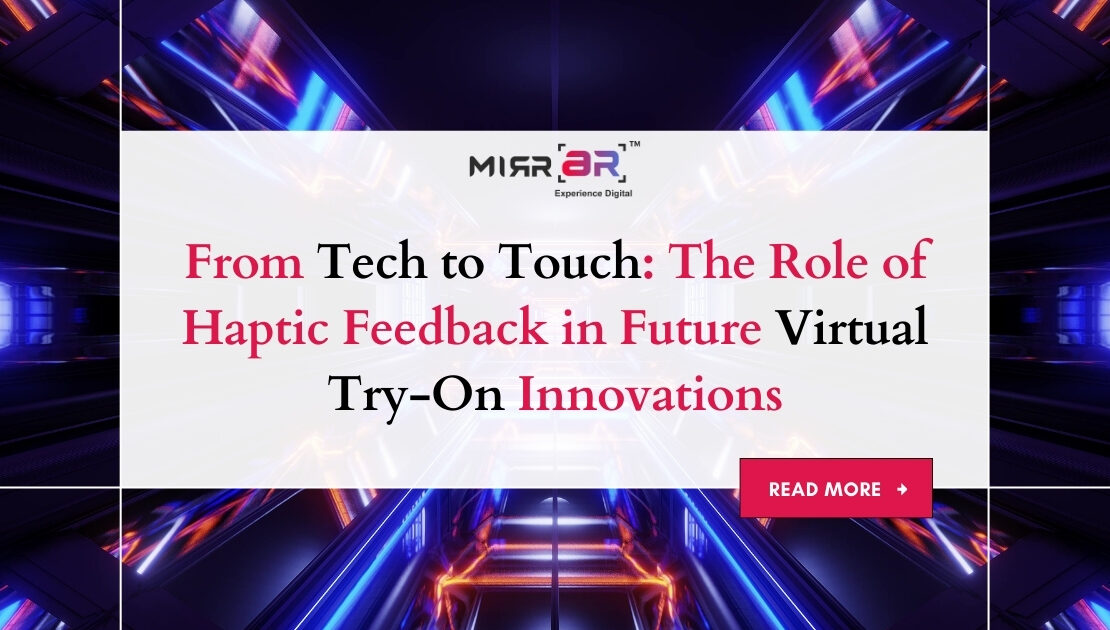
In the ever-evolving world of fashion and retail technology, the line between digital and physical experiences is becoming increasingly blurred. One of the most exciting developments in this space is the integration of haptic feedback into virtual try-on (VTO) technologies. As consumers crave more immersive and realistic digital shopping experiences, haptic feedback offers a new frontier that brings the sense of touch into the equation—making virtual interactions feel tangible.
Understanding Haptic Feedback
Haptic feedback refers to the use of technology to simulate the sensation of touch. You may already be familiar with it in your everyday life—like the gentle vibration when you type on a smartphone or the rumble of a game controller. In the context of virtual try-ons, haptic feedback enables users to not only see and move around a digital version of a product but also to feel textures, pressure, or temperature cues, enhancing the sense of realism.
While most current VTO platforms focus on visual AR (Augmented Reality) and sometimes auditory cues, integrating haptics adds a new layer of interactivity and emotional engagement. Imagine virtually trying on a silk scarf and actually sensing the softness of the fabric or feeling the cool metal of a bracelet—without ever physically touching it.
The Need for Touch in Virtual Experiences
In physical stores, touch plays a major role in the decision-making process. Shoppers often want to feel the weight of a necklace, the texture of a fabric, or the grip of a shoe. With the rise of online shopping and especially VTO solutions powered by AR, this sensory experience has largely been lost.
This lack of tactile interaction creates a gap in consumer confidence. Many are still hesitant to buy products—especially luxury or personalized items—online without the ability to physically inspect them. This is where haptic technology can revolutionize the game. By enabling touch-like feedback, brands can close the sensory gap and offer a more convincing and complete virtual try-on experience.
Applications of Haptic Feedback in VTO
1. Apparel and Fabric Simulation:
With haptic-enabled gloves or wearable devices, users can “feel” how different fabrics like denim, silk, or leather would feel on their skin. The experience can be fine-tuned to reflect fabric weight, smoothness, and stretch.
2. Jewelry and Accessories:
Imagine virtually slipping on a ring and feeling its cold metal band or the raised edges of its engraving. Jewelry brands could benefit immensely by giving shoppers a tactile sense of product quality and intricacy.
3. Footwear and Ergonomics:
Footwear brands could allow customers to sense the cushion level of soles or the tightness of straps in real-time. This can reduce returns and enhance customer satisfaction.
4. Makeup and Skincare:
Though less obvious, haptic feedback can mimic the sensation of applying foundation or lipstick. This could be a game-changer for beauty brands looking to innovate in digital consultations.
Technological Backbone of Haptics in VTO
For haptics to function seamlessly with virtual try-on, several technologies must come together:
- Wearable Haptic Devices: Gloves, wristbands, or touch-sensitive suits embedded with actuators to provide realistic sensations.
- AI & Machine Learning: To analyze user feedback and fine-tune haptic responses based on behavior and preferences.
- 3D Mapping & AR Engines: Advanced scanning of the user’s body to sync haptic responses with precise locations.
- Cloud Computing: For processing massive amounts of data quickly and transmitting real-time feedback across devices.
Together, these technologies enable a synchronized and responsive system that translates digital simulations into tangible sensations.
Also Read: Virtual Try-On and the Future of Smart Mirrors in Physical Retail Stores
Market Impact and Future Possibilities
The global haptic technology market is expected to grow significantly, especially in tandem with rising investments in XR (Extended Reality), AR, and VR for retail. Tech giants and innovative startups are exploring ways to make touch-first experiences mainstream in digital commerce.
For brands, the benefits are manifold:
- Reduced returns due to better-informed purchases.
- Higher conversion rates through increased consumer confidence.
- Stronger emotional engagement with customers.
- Differentiation in a crowded online marketplace.
As VTO becomes standard across fashion, beauty, and even home decor, adding touch as the “final sense” could transform the shopping journey into something incredibly lifelike and memorable.
Challenges to Overcome
Despite its promise, haptic integration is not without its hurdles. Cost and accessibility of hardware are major concerns. Most consumers do not yet own haptic devices, and they remain relatively expensive for mass adoption. Additionally, developing universally compatible, scalable haptic platforms that can cater to various devices and environments is still a work in progress.
However, with companies like Meta, Apple, and startups like HaptX and Ultraleap investing heavily in this space, the gap is closing. As the tech becomes more affordable and portable, widespread adoption is just around the corner.
Conclusion: From Vision to Reality
The future of virtual try-on isn’t just about seeing—it’s about feeling. As haptic feedback continues to evolve, it holds the potential to redefine digital fashion commerce. Brands that embrace this tech will not only provide more immersive shopping experiences but will also build deeper trust and connection with their customers.
From swiping on a phone screen to feeling the cool clasp of a virtual necklace—the era of touch-first virtual shopping has just begun.
